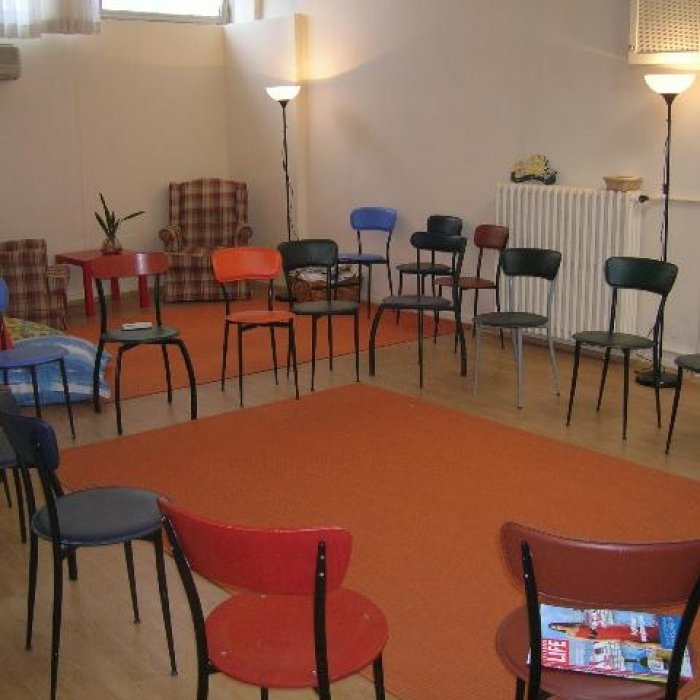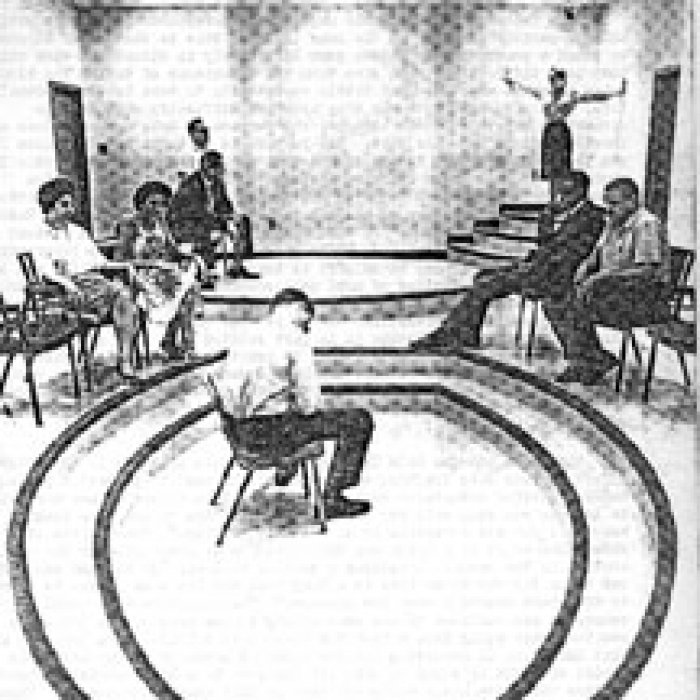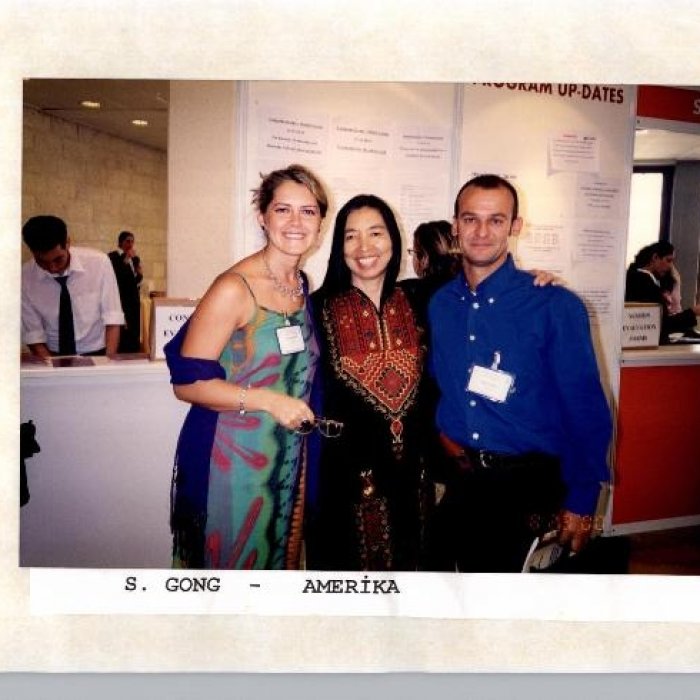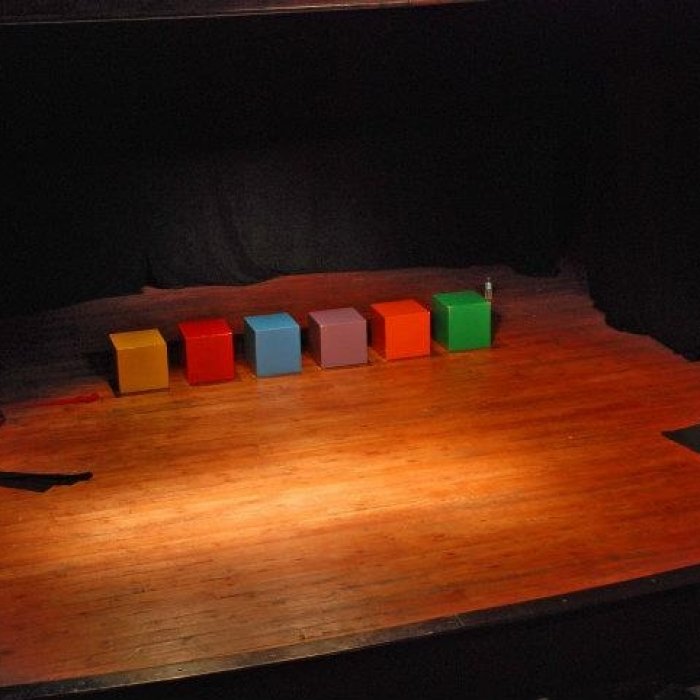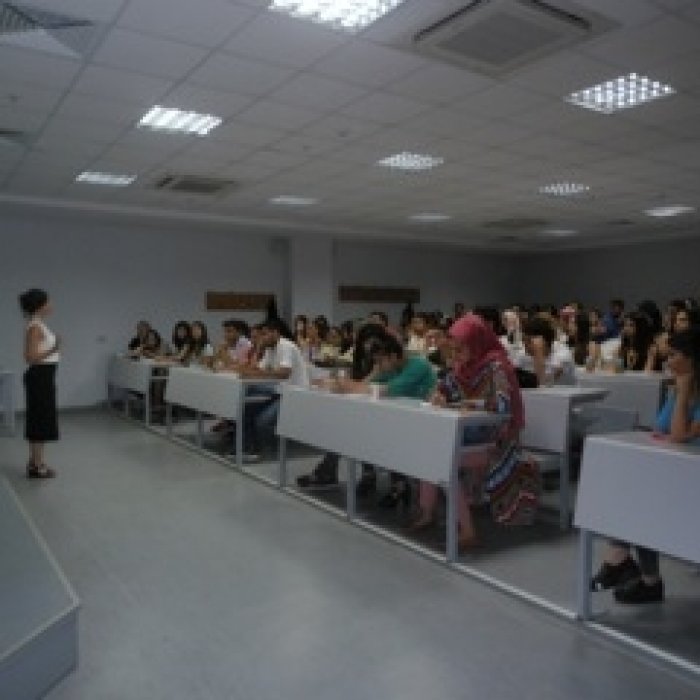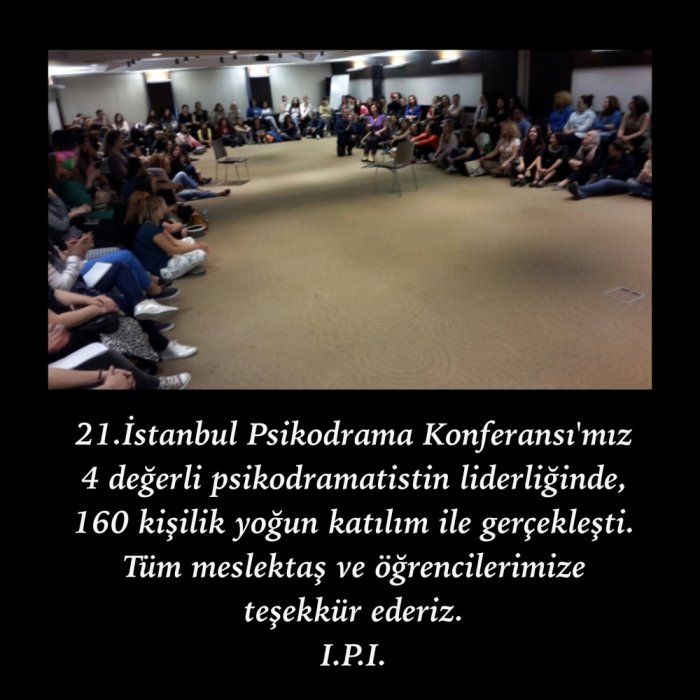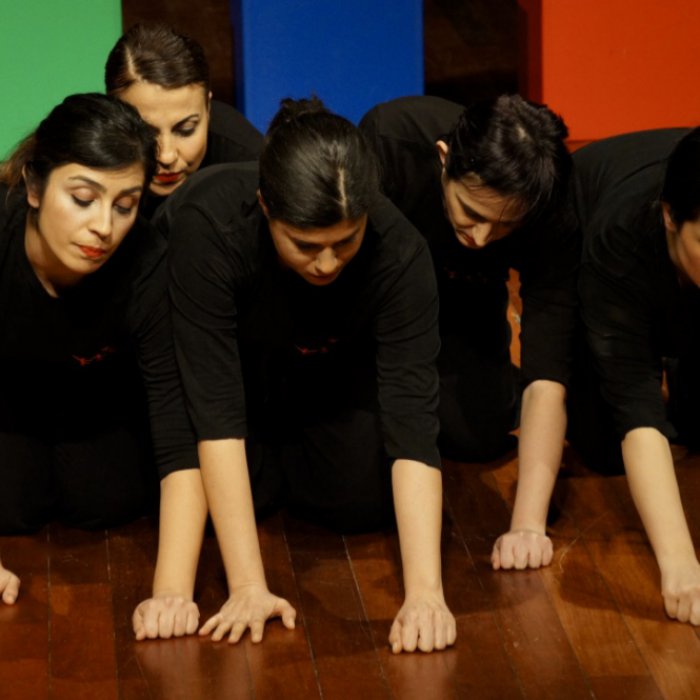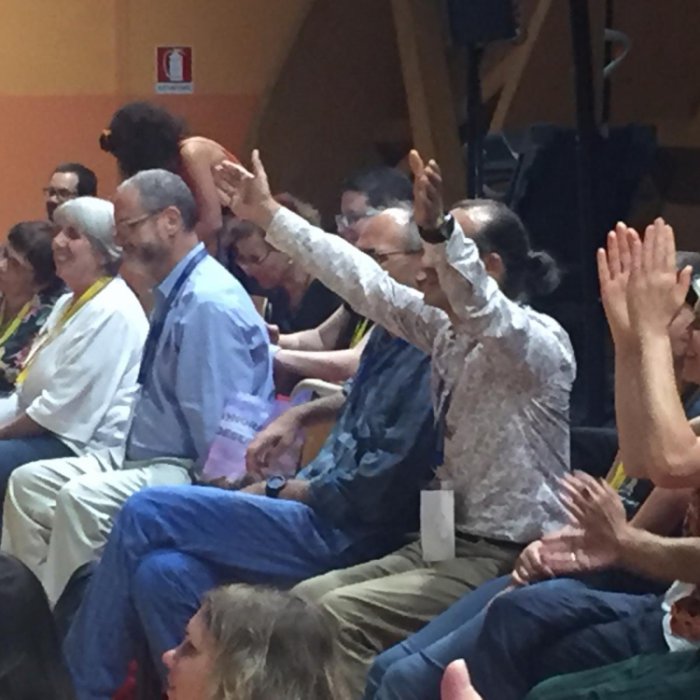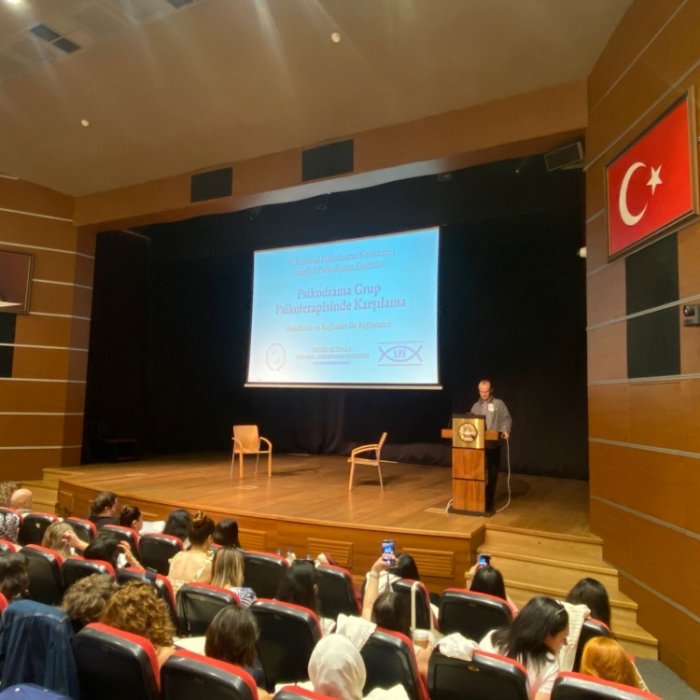Kaynakça
Books on Psychodrama and Sociodrama
Also see www.pdbib.org (the psychodrama bibliography website.)
Baim, C. Burmeister, J., & Maciel, M. (2007). Psychodrama: Advances in theory and practice. London: Routledge.
Blatner, A. (1996). Acting in: Practical applications of psychodramatic methods. New York: Springer Publishing Company.
Blatner, A. (2000). Foundations of psychodrama: History, theory and practice, 4 ed. New York: Springer Publishing Company.
Blatner, A., & Blatner A. (1997). The art of play: An adult’s guide to reclaiming imagination and spontaneity. New York: Brunner/Mazel.
Blomkvist, L.D., Moreno, Z.T., & Rutzel, T. (2000). Psychodrama, surplus reality, and the art of healing. London: Routledge.
Bukowski, W.M., & Cillessen, A. H. (Eds.). (1998). Sociometry then and now: Building on six decades of measuring children’s experiences with the peer group. San Francisco: Jossey- Bass.
Dayton, T. (1994). The drama within: Psychodrama and experiential therapy. Deerfield Beach, Florida: Health Communications, Inc.
Dayton, T. (1997). Heartwounds. Deerfield Beach, FL: Health Communications, Inc.
Dayton, T. (1999). Trauma and addiction. Deerfield Beach, FL: Health Communications, Inc.
Dayton, T. (2004). The living stage: A step-by-step guide to psychodrama, sociometry, and group psychotherapy. Deerfield Beach, FL: Health Communications, Inc.
Dimmock, H.G. (1985). How to analyze and evaluate group growth. Ontario: Captus Press. Djuric, Z., Veljkovic, J., & Tomic, M. (2006). Psychodrama: A beginner's guide. London:
Jessica Kingsley Publishers.
Farmer, C. (1995). Psychodrama and systemic therapy. London: Karnac Books. Feasey, D. (2005). Good practice in psychodrama. New York: John Wiley.
Figusch, Z. (Ed.) (2005). Sambadrama: The arena of Brazilian psychodrama. London: Jessica Kingsley Publishers.
Fonseca, J. (2004). Contemporary psychodrama: New approaches to theory and technique. London: Routledge.
Fox, J. (Ed.). (1987). The essential Moreno: Writings on psychodrama, group method, and spontaneity. New York: Springer Publishing Company.
Fuhlrodt, R.L. (Ed.). (1989). Psychodrama: Its application to ACOA and substance abuse. East Rutherford, NJ: Thomas W. Perrin.
Gendron, J. (1980). Moreno: The roots and branches; and bibliography of psychodrama 1972 - 1980. New York: Beacon House. century: Clinical and education applications. Greenberg, I.A. (Ed.). (1974). Psychodrama: Theory and therapy. New York: Behavioral Publishers.
Goldman, E.F., & Morrison, D.S. (1984). Psychodrama: Experience and process. Phoenix: Eldemar Corp.
Haas, R.B. (1961). Psychodrama and sociodrama in American education. New York: Beacon House.
Hale,A.E. (1981). Conducting clinical sociometric explorations: A manual for psychodramatists and sociometrists. Roanoke, VA: Royal Publishers.
Hale, A.E., & Little, D. (2002). Sociometric processing of action events. Toronto Centre for Psychodrama and Sociometry.
Hare, A. P., & Hare, J. R. (1996). J.L. Moreno. London: Sage Publications.
Haskell, M.R. (1975). Socioanalysis: Self direction via sociometry and psychodrama. Long
Beach, CA: Role Training Associates of California.
Hayden-Seman, J.A. (1998). Action modality couples therapy: Using psychodramatic techniques in helping troubled relationships. Lanham, MD: Rowman & Littlefield Publishers.
Heisey, M. J. (1982). Clinical case studies in psychodrama. Washington DC: University Press of America.
Hoey, B. (1997). Who calls the tune? A psychodramatic approach to child therapy. New York: Routledge.
Gershoni, J. (2003). Psychodrama in the 21 New York: Springer Publishing.
Holmes, P. (1992). The inner world outside: Object relations theory and psychodrama. New York: Routledge.
Holmes, P., & Karp, M. (Eds.). (1991). Psychodrama: Inspiration and technique. New York: Routledge.
Holmes, P., Holmes, P., Karp, M., & Watson, M. (Eds.). (1994). Psychodrama since Moreno: Innovations in theory and practice. New York: Routledge.
Horvatin, T., & Schreiber, E. (Eds.). (2006). The quintessential Zerka: Writings by Zerka Toeman Moreno on psychodrama, sociometry and group psychotherapy. London: Routledge.
Hudgins, M.K. (2002). Experiential treatment for PTSD: The therapeutic spiral model. New York: Springer Publishing Company.
Karp, M., Holmes, P., & Tauvon, K. (1998). The handbook of psychodrama. London: Routledge.
Kellerman, P. (1992). Focus on psychodrama: The therapeutic aspects of psychodrama. London: Jessica Kingsley Publishers.
Kellerman, P. (2007). Sociodrama and collective trauma. London: Jessica Kingsley Publishers. Kellerman, P., & Hudgins, K. (Eds.). (2000). Psychodrama with trauma survivors. London: Jessica Kingsley Publishers.
Kipper, D.A. (1986). Psychotherapy through clinical role playing. New York: Brunner-Mazel.
Leveton, E. (2001). A clinician’s guide to psychodrama, 3rd ed.. New York: Springer Publishing Company.
Marineau, R.F. (1989). Jacob Levy Moreno 1889-1974, father of psychodrama, sociometry, and group psychotherapy. London: Tavistock/Routledge.
Moreno, J.L. (Ed.). (1960). The sociometry reader. Glencoe, IL: The Free Press.
Moreno, J.L. (1969). The magic charter of psychodrama. New York: Beacon House.
Moreno, J.L. (1975). The theatre of spontaneity, Volume 1. New York: Beacon Press.
Moreno, J. L. (1994). Psychodrama, (4th ed.). Volumes I, II, and III. McLean, VA: ASGPP.
Moreno, J. L. (1993). Who shall survive? Foundations of sociometry, group psychotherapy, and sociodrama. McLean, VA: ASGPP.
Moreno, J.L., & Jennings, H.H. (1945). Sociometric measurement of social configurations,
based on deviation from chance. New York: Beacon House.
Moreno, J.L., & Jennings, H.H. (Eds.). (1960). The sociometry reader. Glencoe, IL: Free Press.
Moreno, Z.T., Blomkvist, L.D., & Rutzel, T. (2000). Psychodrama, surplus reality, and the art of healing. NY: Routledge.
Pitzele, P. (1995). Our fathers' wells: A personal encounter with the myths of Genesis. San Francisco: Harper.
Pitzele, P. (1998). Scripture windows: Toward a practice of bibliotherapy. Los Angeles: Alef Design Group.
Roine, E. (1997). Psychodrama: Group psychotherapy as experimental theatre. London: Jessica Kingsley Publishers.
Scategni, W. (2002). Psychodrama, group processes and dreams: Archetypical images of individuation. London: Routledge.
Shu, G. (2004). Yi shu: The art of living and change: Integrating traditional Chinese medicine, psychodrama, and the creative arts. Hong Kong: F.E. Robbins & Sons Press.
Starr, A. (1979). Psychodrama: Rehearsal for living. Chicago: Nelson-Hall.
Sternberg, P., & Garcia, A. (2000). Sociodrama: Who’s in your shoes? Westport, CT: Praeger.
Tauvon, K.B., Holmes, P., Holmes, P., & Karp, M. (Eds.). (1998). The handbook of psychodrama. London: Routledge.
Torrance, E.P., Murdock, & Fletcher, D. (1988). Sociodrama: Creative problem solving in action. Buffalo: Bearly Limited.
Wiener, R. (1997). Creative training: Sociodrama and team-building. London: Jessica Kingsley Publishers.
Williams, A. (1989). The passionate technique: Strategic psychodrama with individuals, families, and groups.
Yablonsky, L. (1992). Psychodrama: Resolving emotional problems through role-playing. New York: Brunner/Mazel.
For more books and articles on psychodrama, see http://www.pdbib.org


